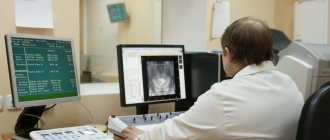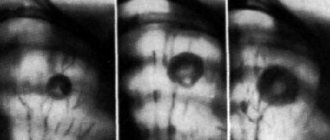When should you get tested for chlamydia?
You need to test yourself for chlamydia:
- in the presence of diseases of the genitourinary system in the chronic stage (cystitis, endometritis, vulvovaginitis and others);
- for women - in case of spontaneous abortion and ectopic pregnancy, infertility with an unknown cause;
- in inflammatory processes in the chronic stage - eyes, kidneys, rectum, joints;
- with atypical course of respiratory diseases;
- gynecological diseases of various origins;
- constant change of sexual partners.
You can become infected with this disease through unprotected sex, during the birth of a child, if the mother is sick, and sometimes through household contact. Women are more susceptible to the pathogen than men. In most cases, there are no symptoms, but there may be pain, burning, itching in the genitals, as well as low-grade fever. We recommend testing for chlamydia in men in case of inflammation of the urethral mucosa. Women need to undergo this test if they have vaginal discharge.
Treatment of chlamydia in women and men
The treatment regimen for women at the ON CLINIC MMC is selected taking into account the individual history of each patient. There are no ready-made algorithms or approved schemes. The doctor takes into account the state of the immune system, the presence of other diseases and inflammations, as well as the state of the intestinal microflora. The same treatment plan is carried out for men.
Couples should only be treated together, otherwise infection from the sexual partner is possible.
Prevention consists of avoiding casual sex and timely and regular medical examination.
At the first consultation, the doctor will tell you how long it takes to treat urogenital chlamydia, whether it can be cured and how much such treatment costs. In any case, our specialists will try to do everything to ensure that the duration of therapy and your psychological and material costs are minimal.
Methods for laboratory diagnosis of chlamydia
The capabilities of modern medicine make it possible to perform tests for chlamydia using different biomaterials. This can be scraping from the genitals, urinary tract or conjunctiva of the eyes - wherever there is mucous membrane. Also, blood, urine or seminal fluid is taken as material for research.
Specialists at Polyclinic +1 perform the following tests:
- microscopic examination of scraping;
- cultural examination of male prostate secretion or scraping from the genitourinary tract;
- immunobiological research;
- PCR analysis for chlamydia;
- enzyme immunoassay.
Analyzes are classified according to the degree of reliability, research methods and revealed results.
If you are interested in how much a test for chlamydia costs in women and men, the price of the service in our clinic starts from 550 rubles.
Detailed information is presented in the table:
| Research method | Where does biomaterial come from? | Price, rub.) |
| Microscopic | mucous membrane of the genitourinary tract, in men - prostate secretion | 900 |
| Microscopic (cultural) | genitourinary tract smear or prostate secretion | 1600 |
| Immunocytological (RIF) | scraping from the genitourinary tract | |
| PCR | blood, scraping, prostate secretion, urine | from 550 to 750 |
| Enzyme immunoassay | blood | 750 |
Prices
| Type of study | Type of study | Basic price FL | Execution mode | Biomaterial | |
| Ordinary | Urgent | ||||
| CHLAMYDIA | |||||
| Chlamydia trachomatis lgA | semi-quantitative | 540 | 2 w.d. | — | Blood syringe |
| Chlamydia trachomatis lgM | semi-quantitative | 515 | 2 w.d. | — | Blood syringe |
| Chlamydia trachomatis lgG | semi-quantitative | 540 | 2 w.d. | — | Blood syringe |
| Chlamydia pneumoniae lgA | semi-quantitative | 515 | 3 w.d. | — | Blood syringe |
| Chlamydia pneumoniae lgM | semi-quantitative | 515 | 3 w.d. | — | Blood syringe |
| Chlamydia pneumoniae IgG | semi-quantitative | 515 | 3 w.d. | — | Blood syringe |
Make an appointment
Differences and features of tests for chlamydia
Microscopic examination of a scraping taken from the mucous membranes or examination of prostate secretions is the simplest and most accessible type of diagnosis. The search for pathogens is carried out in epithelial cells. The disadvantage of this method is that it is prescribed only in the acute stage of the disease.
Cultural microbiological testing is one of the most accurate tests. Its additional advantage is the ability to select an antibiotic for treatment: it allows you to identify sensitivity to medications. The disadvantage of the method is the long wait for the result.
RIF is a universal analysis that allows you to identify the pathogen in the acute and chronic stages. To determine the presence of chlamydia, the biomaterial is treated with a fluorescent substance and antibodies, after which they become visible under fluorescent lighting.
An ELISA test for chlamydia allows you to detect antibodies to the pathogen and determine the stage of the disease. It is most often prescribed in cases of recent infection or absence of symptoms.
PCR is an analysis that allows you to identify DNA fragments in human biomaterial. The advantage of this method is its high accuracy and sensitivity, which makes it possible to diagnose even a latent infection.
Is chlamydia dangerous?
Chlamydia is provoked by a microorganism of the same name called Chlamydia trachomatis, which does not belong to either the group of bacteria or the group of viruses, simultaneously combining the characteristics of both of them. Just like viruses, chlamydia penetrates directly into cells and has the same cell membrane as bacteria.
The infection is transmitted from the carrier. That is, if you have unprotected sexual contact with an infected person, your partner may also become infected. There is also a risk of infection at home if the rules of personal hygiene are neglected.
The danger of the disease lies in the high probability of developing complications in the form of:
- cystitis and urethritis,
- inflammation of the prostate gland,
- endometritis,
- erosive lesions of the uterine cervix and so on.
The disease can prevent conception and pregnancy.
How to prepare for a chlamydia test
The reliability of the results obtained depends on how well the person followed the preparation recommendations. And they, in turn, depend on the material that will be selected by the health worker for analysis.
If you plan to draw blood, you must stop eating food 10–12 hours in advance and abstain from alcohol for at least 2 days.
If biomaterial is collected from the urogenital tract, you must abstain from sexual intercourse for 2 days.
For chlamydia trachomatis, a test in women is taken from the vagina or cervix - it is best to take the sample on the first day after the end of menstruation. A test for chlamydia during pregnancy is taken in compliance with all precautions - the doctor’s manipulations do not pose a threat to the health of the mother and child.
When taking urine for analysis 1.5 hours before, you should not urinate. Requirements for urine collection: morning urine, taken after performing hygienic procedures or showering.
If a patient is going to be tested for chlamydia and is taking tetracycline antibiotics, in order for the tests to be reliable, they must stop taking it a month before the test.
What antibiotics treat chlamydia
Antibiotic therapy for chlamydia must meet three parameters:
- possessing high activity against the pathogen;
- penetration of drugs into the cell and creation in it of the concentration necessary for their reproduction;
- relatively low toxicity of drugs;
- the choice of drug should depend, among other things, on the duration of the patient’s infection and the clinical picture of the inflammatory process.
Based on numerous studies, it has been established that currently, in the treatment of chlamydia, three main groups of antibiotics meet the above requirements: tetracyclines, macrolides, and fluoroquinolones.
Sumamed in the treatment of chlamydia
Sumamed is one of the antibiotic drugs, which is a representative of the group of macrolides (drugs with bacteriostatic action). It is not uncommon for adults suffering from chlamydia to infect their children, so it is worth noting that the advantage of sumamed is that it can be prescribed not only to adults, but also to children of any age.
This drug interferes with the activity of certain protein-producing components of disease-causing microbe cells. Azithromycin, which is part of sumamed, penetrates into cells, including phagocytes, which are localized at the site of inflammation. Thus, the drug helps create therapeutic concentrations of active substances that fight chlamydia at the site of infection.
Judging by patient reviews, sumamed for chlamydia leads to a relatively quick positive treatment effect.
The main thing to remember is that the drug must be taken strictly as prescribed by the doctor and only in the dosages specified by him.
Clarithromycin for chlamydia
Clarithromycin is a semisynthetic macrolide antibiotic that has the ability to penetrate cells and destroy pathogens. Once in the cell, the drug disrupts the production of intracellular proteins and thereby prevents further spread of infection.
The dosage regimen and duration of treatment with clarithromycin are determined by the doctor individually, taking into account the indications, the severity of the infection and the sensitivity of the pathogen.
Currently, many analogues of clarithromycin are registered, which have a similar therapeutic effect, but they can only be used after consultation with a doctor.
Take care of your health! And if you have any doubts, come to us, at ON CLINIC, we will promptly help you solve any health problem!
Advantages of visiting “Polyclinic +1”
When contacting our clinic to diagnose chlamydia, each patient can be sure of:
- high level of staff qualifications - doctors have more than 20 years of experience;
- attentiveness and comprehensive solution to the problems of each patient - we prescribe only the necessary medications;
- the ability to take tests anonymously without presenting a passport;
- prompt receipt of results - decoding is performed as soon as the analysis is ready.
If you are interested in a blood test for chlamydia and the price in Moscow, you can make an appointment with a doctor (the consultation precedes the test) online or by phone. We are waiting for you in our clinic - we will resolve all doubts as soon as possible!
How is infection detected?
To detect sexually transmitted infections in the patient’s body, various laboratory diagnostic methods can be used. Among them:
- ELISA is aimed at detecting antibodies produced by the patient’s body in response to infection. This method provides a quick and accurate result, but does not find microorganisms in the early stages, when the person’s immune system has not yet responded to infection.
- PCR is a qualitative method for confirming or refuting the presence of a sexually transmitted infection with high sensitivity. This method involves directly studying the DNA of the pathogen, due to which it can detect infection in the early stages.
You can undergo the necessary examination, take the test at a time convenient for you, using the laboratory diagnostic services at the Vash Doctor Group of Companies. The clinic’s specialists will help decipher the tests and prescribe the correct treatment if the results of the study confirm the fact of infection.
How is chlamydia transmitted?
According to doctors, the main method of infection with chlamydia is sexual
.
However, some studies have shown that chlamydia is also capable of entering the human body through household means
or from mother to child, during its passage through the birth canal contaminated with pathogenic bacteria.
In this case, newborns may be diagnosed with chlamydial conjunctivitis or pneumonia. Some types of chlamydia can be transmitted after indirect contact with their carrier - by airborne droplets
.
However, in this case they will not cause the development of chlamydia. Chlamydia that enters the body in this way causes the development of chlamydial pneumonia or respiratory chlamydia. Chlamydia is one of the most common diseases, as it can be transmitted through the saliva of a patient during kissing
. But this is only possible if the disease occurs in a chronic, advanced form. At the initial stages of development, the disease is not transmitted through a kiss.
DIAGNOSIS OF CHLAMYDIAL INFECTION.
To diagnose urogenital chlamydia, it is necessary to undergo tests using PCR and enzyme-linked immunosorbent assay (ELISA). It is especially important to undergo a full examination for the following persons: those who have had unprotected, extramarital, sexual contact; those who are being examined for one reason or another for other STIs - ureaplasma, mycoplasma, herpes, gonorrhea, CMV, trichomoniasis; men with symptoms of dysuria, prostatitis, urethritis, with mucopurulent discharge from the urethra, with infertility without an established diagnosis, with problems with potency; women with infertility, miscarriage, with mucopurulent discharge, with an unspecified diagnosis, with symptoms of acute or chronic inflammation of the appendages (adnexitis), endometritis and other diseases of the female genital organs; newborn babies from mothers who had chlamydial infection either before pregnancy or during pregnancy.
PCR testing remains the gold standard in determining chlamydia.
Chlamydia is diagnosed if the bacteria themselves are detected in a smear (scraping) taken from the affected area (PCR), and antibodies to chlamydia (ELISA) are detected in the blood, which inform the doctor about the previous contact of the immune system with chlamydia.. Culture is designed to identify, microflora accompanying chlamydia. It is also recommended, for a general assessment of the clinical picture, to conduct research on mycoplasmas, HIV, ureaplasma, hepatitis and other infections that can be transmitted during sexual contact. PCR analysis. This is the most sensitive test for chlamydia. The analysis makes it possible to detect pathogenic flora, even if the sample contains only a couple of chlamydia DNA molecules. When carried out correctly, the accuracy of the study reaches one hundred percent. The presence of microorganisms can be detected even when they exist in a latent form. This allows you to start treatment earlier. Chlamydia in a patient, however, can sometimes be misdiagnosed. PCR analysis, for all its advantages, does not always give correct results. The fact is that if the material sample is contaminated or if the study was carried out after a course of chlamydia therapy, false positive results may be obtained. But that's not so bad. It’s worse when the test is false negative: bacteria actually present in the body are not detected, and therefore no treatment is carried out. Chlamydia may not be detected if: the material for research was taken unsuccessfully; urination occurred not long ago, less than 2-3 hours before collecting material for research; less than a month before the analysis, the patient took active antibiotics relative to pathogens. Also, PCR diagnostics can show a negative result if the inflammatory process is localized in the deep parts of the reproductive system in men (prostate, seminal vesicles) and in women (fallopian tubes, ovaries). In this case, the sample will not contain the genome of the microorganism. The above means that you cannot limit yourself to PCR analysis and make a diagnosis solely on its basis.
It is recommended to combine various research methods, and if the results are questionable, to undergo the examination again.
It is necessary not only to determine the pathogen itself, but also to evaluate the immune response (the body's reaction) using serological tests, for example, ELISA.










